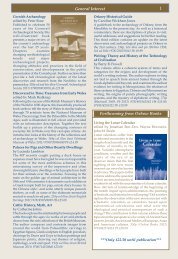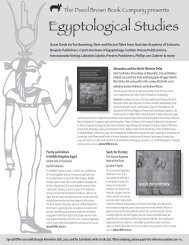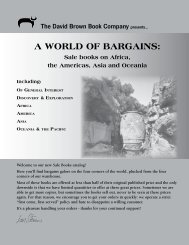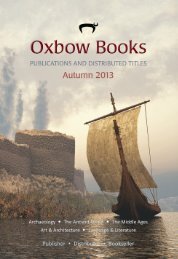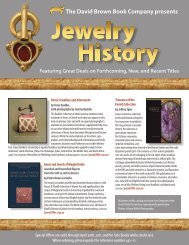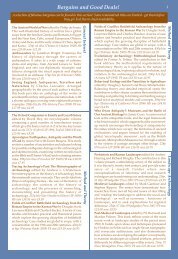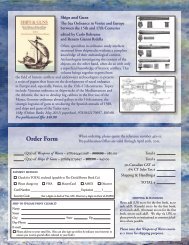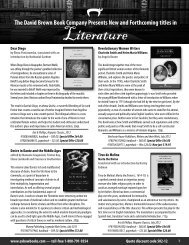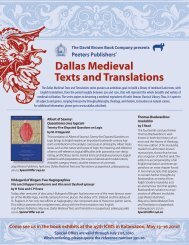Oxbow Spring 2013.pdf - Oxbow Books
Oxbow Spring 2013.pdf - Oxbow Books
Oxbow Spring 2013.pdf - Oxbow Books
You also want an ePaper? Increase the reach of your titles
YUMPU automatically turns print PDFs into web optimized ePapers that Google loves.
Topographical Bibliography of Ancient Egyptian<br />
Hieroglyphic Texts, Statues, Reliefs and Paintings<br />
VIII Objects of Provenance Not Know, part 4: (Dynasty XVIII to the Roman Period)<br />
Bertha Porter (Author)<br />
This volume, which is the fourth part of Topographical Bibliography VIII, Objects<br />
of Provenance Not Known, presents accessible references for unprovenanced<br />
stelae dating from Dynasty XVIII to the end of the Roman Period. The coverage<br />
includes monuments in museums and private collections, as well as those<br />
which have surfaced in sales and auctions only to disappear from sight once<br />
again. Volume VIII, Parts 3 and 4, provide the first comprehensive survey of<br />
unprovenanced stelae ever undertaken. The number and range of the stelae<br />
open up many new areas for further research, making possible an altogether<br />
fuller coverage of the material than has been possible hitherto. This volume<br />
contains extensive indices.<br />
9780900416903, £85.00, Available Now<br />
HB, Topographical Bibliography, Griffith Institute<br />
Journey to the West<br />
The world of the Old Kingdom tombs<br />
Miroslav Bárta (Author)<br />
This book is intended as a commented summary of some of the major trends<br />
and most important features that can be encountered when analysing ancient<br />
Egyptian society of the Old Kingdom. The goal for writing this book was to<br />
outline general trends in the history of the non-royal tomb development of<br />
the period. The reason is rather simple and straightforward: ancient Egyptians<br />
considered the tomb to be their afterlife residence for eternity. In the afterlife<br />
they replicated the life they experienced during the lifetime. Thus the tomb<br />
architecture, decoration, inscriptions and equipment paradoxically represent a<br />
major tool for our understanding of the everyday life of the ancient Egyptians<br />
and enable a better comprehension of the development and dynamics of the<br />
Old Kingdom.<br />
9788073083830, £21.00, Available Now<br />
PB, 342p, Czech Institute of Egyptology<br />
Ancient Egypt<br />
Abusir and Saqqara in the Year 2010<br />
2 volume set<br />
Filip Coppens (Author); Jaromir Krejci (Editor); Miroslav Bárta (Editor)<br />
The Czech Institute of Egyptology of the Charles University in Prague has since the<br />
start of the third millennium established the tradition of organising on a regular<br />
basis a platform for scholars, active in the pyramid fields and the cemeteries of<br />
the Abusir-Saqqara-Dahshur region, to meet, exchange information and establish<br />
further cooperation. The present two part volume, containing 51 contributions<br />
in total, is the result of the already third “Abusir and Saqqara” conference held<br />
in late May and early June 2010. The focus of the majority of the articles is on<br />
these cemeteries of the Memphite region at the time of the Old Kingdom, but<br />
not a single period is left untouched. A number of articles also move outside<br />
the core region, studying material and developments elsewhere in Egypt, but<br />
always against the background of the Memphite necropolis.<br />
22<br />
9789491431074, £42, August 2012<br />
9788073083847, £93.00, Available Now<br />
HB, 475p, Groningen Archaeological Studies 19, Barkhuis<br />
HB, 904p, 45 colour plates, Czech Institute of Egyptology




